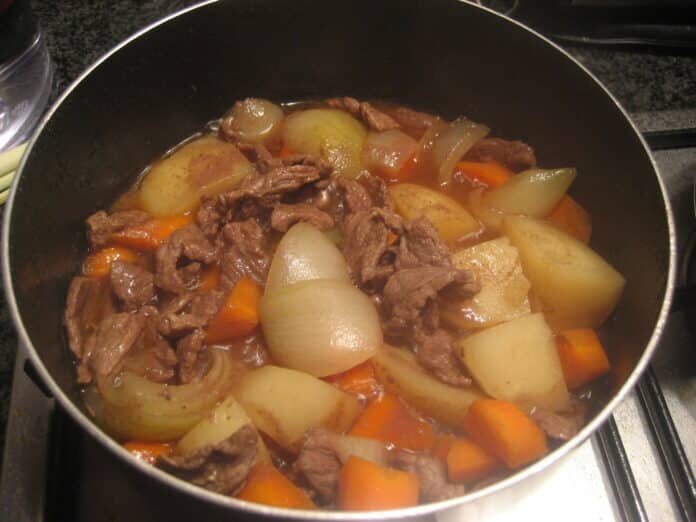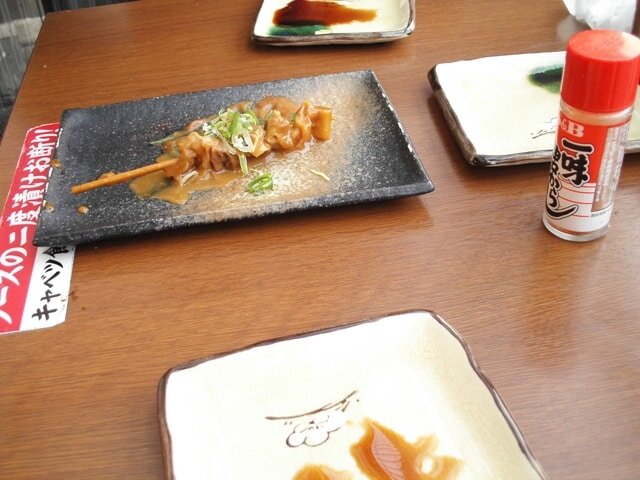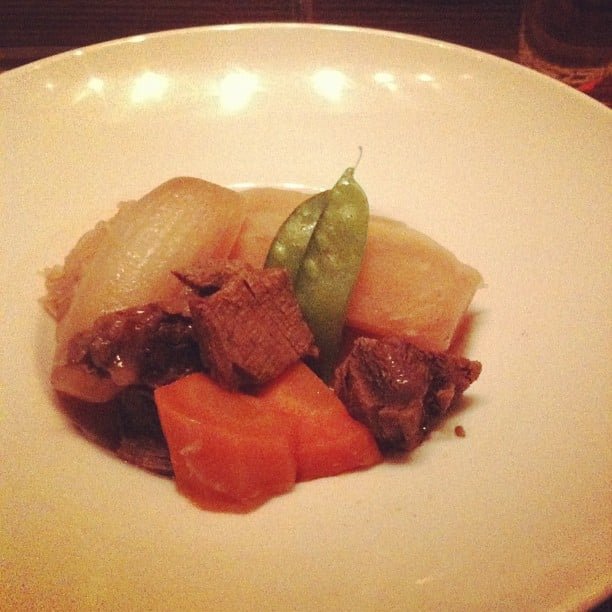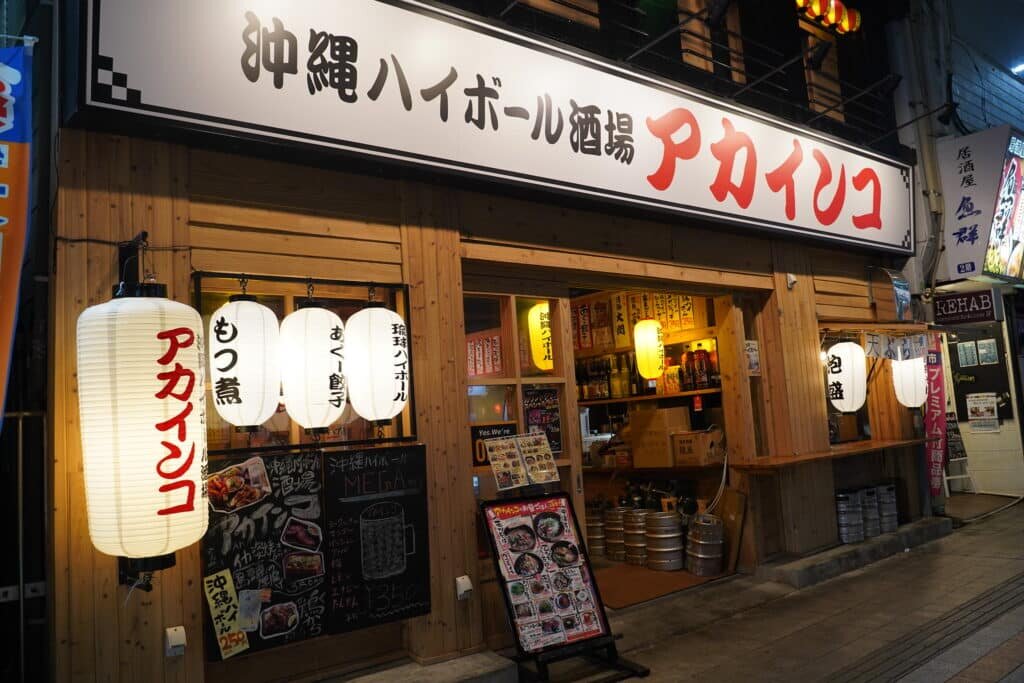
For lovers of stew and also those who need something warm, soothing and easy to eat on a cold winter’s evening. I may have found just what you need…
What is Doteyaki?

Doteyaki is a kind of beef stew. However, it is quite significantly different from the kind of beef stew your typical European or American is probably used to. No sign of gravy, sausages or roast potatoes anywhere here!
The cut of meat is also different. Whereas most stew recipes in the west tend to use stewing steak or something similar, Osaka’s Doteyaki utilises beef tendons in its preparation.
In a sense, I guess this means that one could define it as a “horumon” style dish, since it is using a cut of meat not commonly seen as a prime cut. Though, it has to be said that Doteyaki is a whole lot more palatable than grilled intestines to the average European or American tourists. Beef tendon really aren’t all that different from the conventional cuts of beef we would ordinarily purchase from our local butcher’s shop.
However, where Doteyaki does differ is in it’s preparation. Whereas most stews in the west are served in a gravy or demi-glace based sauce, in Doteyaki, the meat is stewed in a blend of Miso paste, mirin (a type of Japanese vinegar), sweet sake and for added sweetness, a few drops of sugar.
What you are left with is a very sweet, yet succulent stew that’s guaranteed to leave you feeling full and content on a cold winter night.
Varieties of Doteyaki

Although the base elements and the means of preparation almost always remain consistent, there are a number of different ways to enjoy Doteyaki, depending on where you are eating, and what your own personal tastes are.
Some places serve it on skewers, as an accompaniment to beer or other alcoholic drinks. Others sometimes serve it in a bowl, with the mirin and miso broth taking on an almost soup like consistency. This version is especially popular during those cold winter months!
I have even seen one place that tried to almost recreate a European style stew, but using Doteyaki. There, the beef was served with asparagus, boiled carrots and even a couple of roast potatoes!
However you like it, I would encourage you to experiment with the different styles, as these each give their own unique culinary experience when sampled for the first time.
Where to buy Doteyaki

Being a widely popular and extremely easy to make dish, there is no shortage of places where one can try Doteyaki.
If you fancy trying the skewers of Doteyaki, along with a couple of cheap, cold beers, then your local izakaya is the place to go. If you’re trying it for the first time and you’re not sure if it will be suited to your tastes or not, then this is probably the best way to try Doteyaki initially. Just order a couple of skewers and see how you go. Afterall, being an izakaya, if you dont like it, there’s no shortage of other dishes you can order to take the taste away!
In higher class Japanese restaurants, its not unusual to see Doteyaki served as an appetizer or a side dish. So don’t be too worried if you go in there and don’t see it on the menu. Ask a member of staff and I’m sure they’ll be able to throw something together for you!
How to make Doteyaki

As I mentioned earlier, Doteyaki is extremely easy to make, and doesn’t take very long either.
If you fancy having a go at making it yourself, you’ll need the following ingredients:
250 grams of beef tendons
1 small grated daikon radish (use turnip if you cant find daikon)
1 block of tofu
1 medium sized piece of ginger (peeled and finely chopped)
3 tablespoons of Miso
250 ml of chicken stock
1 teaspoon of Soy Sauce
3 capfulls of Sake
2 capfulls of vinegar (Mirin vinegar if possible)
Chop up your beef tendons and your tofu, boil them in a pot of hot water and be sure to skim off any scummy residue that forms.
Add your chopped ginger and grated daikon to the pot, simmer gently for a few minutes until everything is nice and soft.
Next, add your stock, vinegar, and soy sauce. Keep hold of the sake for now, infact, pour yourself a small glass, you’ve earned it!
Give everything a good stir, then place a lid over your pot and let everything simmer away on a medium heat for about 15 minutes.
Once the time is up, give everything another quick stir, make sure nothing is sticking to the pan, and you can now add in your two capfulls of sake.
Give it one more big stir then let it simmer away for another five minutes.
Serve in a big bowl with another glass of that delicious sake, or the beer of your choice!




















